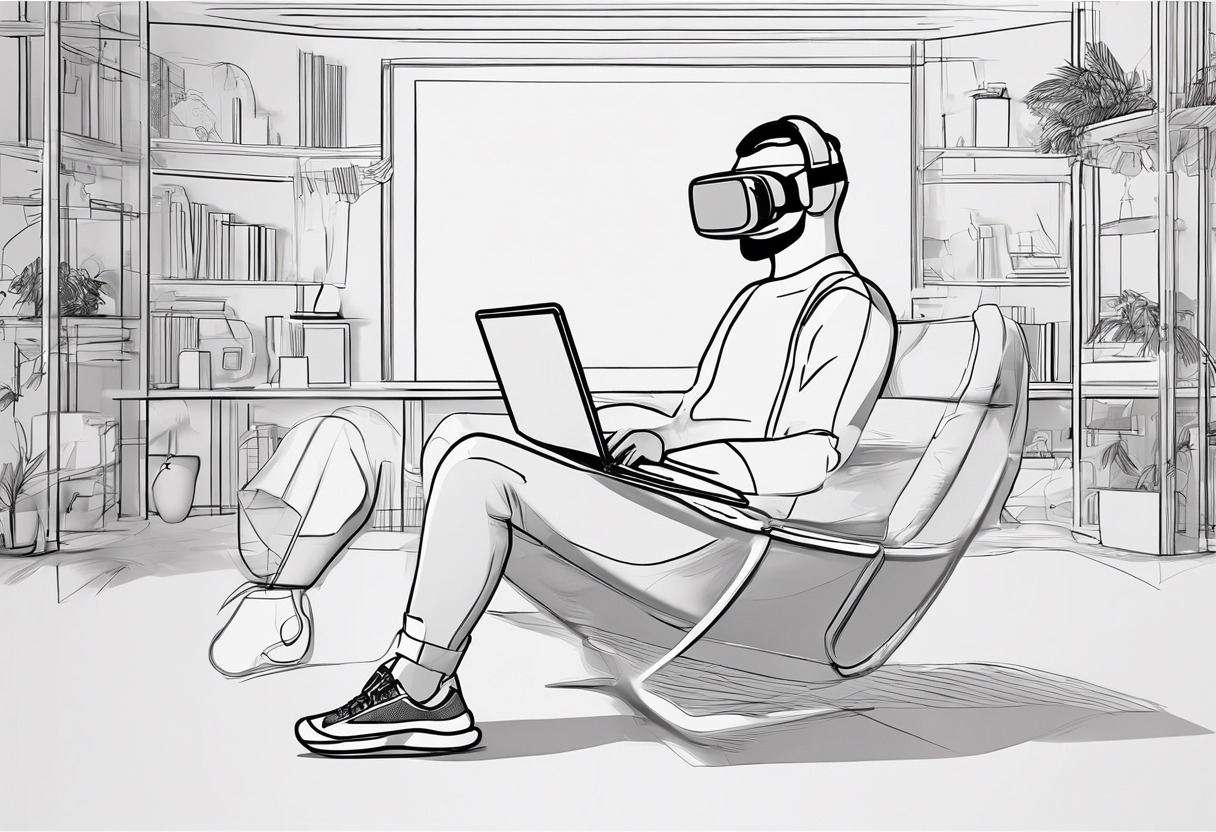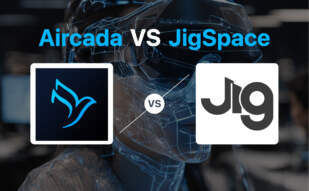Key Differences Between Aircada and WebXR
- Aircada specializes in Augmented Reality (AR) web applications with a no-code approach, while WebXR unifies VR and AR realities for immersive 3D creations.
- Aircada’s device-agnostic platform incorporates 3D model scanning and uploading capabilities, while WebXR relies on high precision and rapid data processing.
- A strong emphasis on security is seen in Aircada with encrypted communication, compared to WebXR’s API that addresses performance drops, large data volume, and device communication security.
- Aircada offers a competitive pricing structure with a free tier, while WebXR support is critical in major browsers and its capabilities are defined by W3C groups.
Aircada and WebXR serve different purposes. If your enterprise requires swift creation of high-grade AR web applications with no-code, choose Aircada. However, if you aim for immersive 3D creations straddling VR and AR realities, necessitating rapid data processing and device compatibility, opt for WebXR.

| Comparison | Aircada | WebXR |
|---|---|---|
| Technology Focus | Augmented Reality (AR) No-Code Platform | Virtual Reality (VR) and Augmented Reality (AR) Web-based Applications |
| Primary Users | Marketers, Artists, 3D Designers, AR Enthusiasts | 3D Artists, VR Tool Developers |
| Creation Process | AI-driven Algorithms, 3D Model Scanning | WebXR Device API, WebGL, 3D Render |
| Performance | Fast AR creation, efficient graphic creation process | Relies on Low Latency, High Precision and Rapid Data Processing |
| Interoperability | Mobiles, Tablets, Lidar-equipped gadgets | Major Browsers; HTC Vive, Oculus Rift, Google Cardboard etc. |
| Features | 3D Object Scanning, Customizable Scenes, 2D Interface Creation, QR Codes | 3D Art, VR Tools, Model Visualizations, Device Location and Movement Vector Translation, 3D Scene Rendering |
| AR/VR Support | Primarily AR with support for VR experiences | Both AR and VR (Unifies Realities) |
| Documentation | Available at aircada.com/docs | Defined by W3C Groups, Immersive Web Community and Immersive Web Working Group |
| Availability | Website: https://aircada.com | Web-based, Supports Major Browsers |
| Integration | Seamless Integration with other software and platforms | Toolkits and Libraries like AR.js, Three.js, A-Painter XR, A-Frame, ARCore etc. |
| Market Position | Intends to capture significant portion of AR software market | At the forefront of VR and AR evolution |
What Is Aircada and Who’s It For?
Aircada is an innovative platform masterminded for companies of any size, 3D designers, AR enthusiasts, and more, powering their capabilities to create, deploy, and view AR content rapidly and efficiently. This state-of-the-art platform, conceived by Sean and Wylie Chenoweth, makes AR accessible to all. Aircada is designed to enable flawless AR experiences, be it for marketers aiming to capture consumer attention or industrial equipment manufacturers requiring guided procedures and training. It’s an avant-garde, no-code solution for the constantly evolving world of AR.

Pros of Aircada
- AI-driven, intuitive platform for easy AR content creation
- 3D model scanning and importing capabilities
- Compatible with a variety of devices
- High Security with encrypted communication
- Team collaboration features available
- Offers competitive free plans, and affordable premium options
Cons of Aircada
- Being relatively new, its market reputation is yet to be fully established
- With instant AR experience creation, customization might be limited
- Complex 3D renders might require advanced technical skills
What Is WebXR and Who’s It For?
WebXR is the new generation of web-based VR and AR reality. It’s a seamless way to unify and simplify the creation of immersive 3D art, VR tools, and more. Artists, designers, content creators, and tech enthusiasts will find WebXR to be their playground. The state-of-the-art WebXR Device API addresses the web’s inherent challenges, offering high precision, low latency, and rapid data processing. It’s the future of VR and AR, offering a platform that’s as agile and adaptable as the ever-evolving digital landscape.
Pros of WebXR
- Enables creation of immersive, 3D content
- Facilitates high-speed data processing and low latency
- Highly adaptable, supporting new devices as they arrive in the market
- Enables fast deployment and content updating
- Included in several stable browser versions
Cons of WebXR
- As a Web API, WebXR necessitates developers to manage rendering and texturing
- Limited native applications on hardware, despite allowing networked experiences
- Its relative novelty means educational resources and support might be limited.
Aircada vs WebXR: Pricing
Aircada offers a highly competitive free edition and subsequent plans starting at around $20 per month, while WebXR operates on a free, open-source model.
Aircada
Aircada’s pricing includes a highly competitive FREE edition that provides a myriad of features such as custom branding, unlimited projects, and 3D model scanning capabilities. Their subsequent plans commence at a reasonable $20 per month, with an enterprise plan for approximately $79 per month.
WebXR
As an open-source API, WebXR does not operate on a conventional pricing model. It is essentially free to use, with the necessary investment primarily based around development and implementation costs.
Aircada vs WebXR: The Final Verdict
After dissecting the intricacies of Aircada and WebXR, it’s decision time. Which technology deserves your allegiance? The answer rests with your unique audience persona and its distinct requirements.
The Entrepreneurial Artist
If you’re an artist or marketer thriving on the AR realm, Aircada will be your trusted ally. With its no-code platform, realistic 3D rendering capabilities, and cogent AR content management system, you can express your creativity seamlessly, without wrestling with the intricacies of coding. Rest assured, your AR dreams will find fruition in a matter of seconds. And let’s not forget the affordability factor—a free edition that lends you limitless power.
AR/VR Developers
For AR/VR developers, WebXR stands triumphant. WebXR’s simultaneous support for VR and AR—mixed reality—coupled with the WebXR Device API’s superior performance and security configuration propel it to the forefront of immersive content creation. Whether it’s creating 3D art, immersive tools, or model visualizations, WebXR equips you to conquer any challenge. As the API is not a rendering technology, it offers you exquisite control over rendering and texturing.
Tech Enthusiasts
For tech enthusiasts always hunting for the definitive edge, it’s a toss-up between the unique merits of Aircada and WebXR based on application intent. If rapid, intuitive AR experience creation with high-quality rendering ranks high, Aircada is your go-to platform. But if you’re gravitated towards the finesse of handling rendering and texturing, then WebXR, with its WebXR device API, is your battleground.
When it’s a face-off between Aircada vs WebXR, the victor is determined by your needs. If speed, simplification, and superior 3D rendering take center stage, Aircada is the perfect choice. However, if you gravitate towards mixed reality, demand precise control over rendering and texturing, WebXR paves your path to creation.
Tiffany Brise
Content writer @ Aircada, patiently awaiting a consumer AR headset that doesn’t suck.





